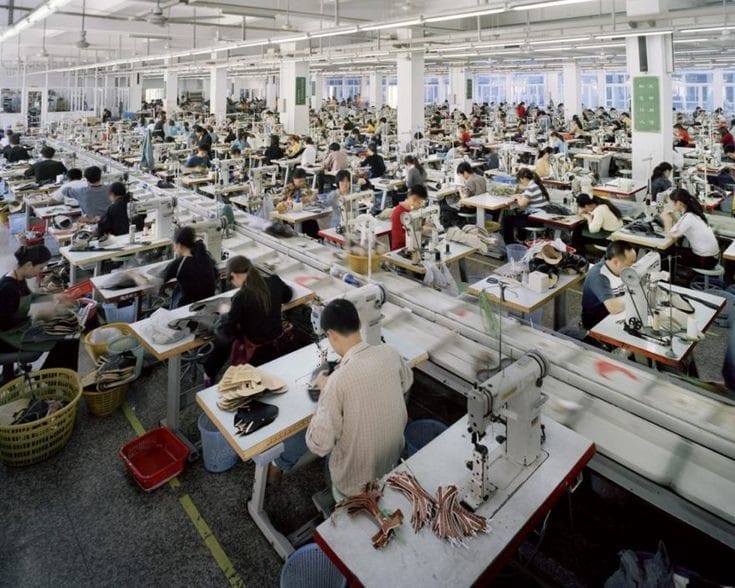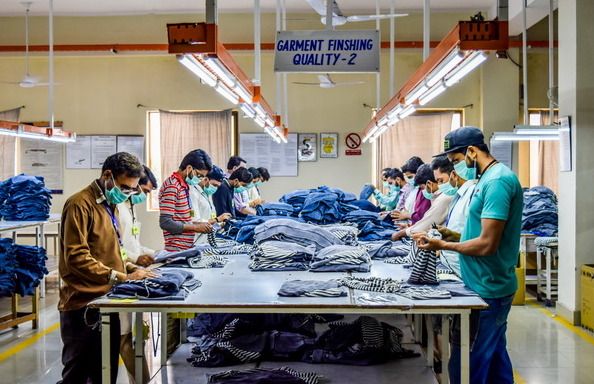The process of inventing a new clothing line or even just one garment design is full of creativity and precision. From the first spark of a new idea to when it reaches a customer, this process is taken through a structured, almost methodological approach, proving essential to the quality of the finished product. If you are new to the fashion world, this timeline of fashion production may provide some confidence in your steps as you approach the showroom floor. Here’s a step-by-step look through the stages in Apparel production, so we can see how an idea is transformed into something wearable.

image credit: Pinterest
Top 10 stages to start your apparel production
-
Ideation and Concept Development
Good designs always start with an idea. It is where creativity will shine, as people brainstorm, sketch, and gather all the ingredients to bring their concept to life. Just like that, ideation is a chance for designers to just experiment with limitless possibilities by establishing trends, targeted markets, and seasonable themes. And that is how mood boards and style inspirations combine when clarifying the vision.
Using platforms like Maker’s Row, you will get in touch with professional industry experts, visit fabric libraries and accessory options, and be educated in manufacturing capabilities to help hone your concept. This is all the early work that everything else is based on.
-
Market Research and Trend Analysis
Before it gets too deep, though, market research ensures that your idea cuts across into the minds of your potential customers. Knowing who your audience is, studying what other competitor brands are doing, and researching market trends are all necessary before going too far. You understand what’s hot, what’s fading out, and what gaps need to be filled by you in your approach. It is much more about finding opportunities for innovation than just following hot trends.
Knowing this information will expand trends that may be expected and followed up in color, fit, and form of clothes in terms of production. Therefore, by knowing what the market has to say, you’ll have all the reason to make decisions based on some great knowledge in all your stages onwards.
-
Design and Sketching
From a sound concept and market direction, design work begins. At this stage, designers put their ideas on paper by drawing through hand or digitally. All these are mere representations of what the garment is to look like, including stitching, seams, and all such textures of fabric. They can well come up with several versions and iterate over different variants until they attain a precise look that resonates with their brand identity.
It is at this point that color schemes, materials, and fabric choices will begin to take on shapes. A successful design will also assist by facilitating clarity in the communication process in subsequent stages of production, particularly in sample making.
-
Pattern Making
Once the design is decided, then the pattern-making begins. This is the step where two-dimensional sketches start to come alive in three dimensions. These are nothing but templates for each component of the clothing; it may be a sleeve, a collar, or the body of the garment. Highly skilled pattern makers ensure that each piece of fabric should ideally come together accurately in the final assembly.
Creating patterns requires highly accurate information. Any mistake may lead to terrible fit or complete waste, and therefore many brands engage the services of very experienced pattern makers. You get to involve the experts who major in particular patterns in Maker’s Row so that you can ensure accuracy and quality from the very beginning.
-
Sample Creation
The sample-making stage is where your idea finally begins to take shape. Manufacturers or sample makers take your design and pattern and create the first garment according to the specifications in your design and pattern. Samples are essential for quality control, and it is during this process that you find out how well your ideas translate into real life.
This is a critical review time—whether the garment fits, the choice of fabric and color meets the requirements, and the design achieves the original vision. So, the sample would thus have to be fine-tuned before being passed as good enough to go into production, which justifies taking all the more care to ensure that everything is in order.
-
Sourcing Materials and Fabrics
Now comes the time to source materials. Fabric is one of the most pivotal steps in apparel production because it can make or break your product; it affects not only the look and feel of your product but also its durability, cost, and functionality. Now is the time you think about zippers, buttons, trims, and all those other components that will be part of your finished product.
Connections to platforms like Maker’s Row can make sourcing easier because they give you access to fabric mills, material suppliers, and experts who could give you leads on sustainable or even cost-friendly options.
-
Pre-Production Planning
Preproduction planning is all about logistics finalization before the full-scale production stage. You will place an anchor in timelines and clearly established production slots and, of course, confirm budgets at this stage. Quality control measures will also be discussed for setting proper standards during production. Careful communications with manufacturers in such a stage can avoid possible problems.
If your production will require multiple locations or specialized processes, such as embroidery, printing, or dyeing, then this stage must outline how and when each part of the process will be accomplished.
-
Bulk Production
Having established the collection, it’s time to start with bulk production wherein the different garments produced are in large quantities. Manufacturers may then work on cutting, sewing, and assembling the pieces according to the final sample and pattern. There will be quality control where every garment is checked by inspectors for accuracy in stitching and fit and the quality of the fabrics used.
The length of time for bulk production will obviously depend upon the intricacy of the garment, the quantity ordered, and the capacity of the manufacturer. Effective communication in this area will avoid further delay and ensure that the production remains on schedule.
-
Quality Control and Inspection
Once the mass production is done, quality control also comes into play. Inspectors will go through each garment for consistency—to see if the colors match, seams are secure, and sizes match what was intended. Quality control ensures that all the pieces meet your brand’s standards before they go to market.
This stage is also the place where adjustments or repairs may be needed to achieve quality requirements. Brands that establish strong quality control are able to build customer trust since people can rely on fit and durability of purchases.
-
Packaging and Shipping
The last step in garment manufacturing is packaging and delivery. Clothes are folded, bagged, labeled, and ready to ship to the distribution centers or retail stores directly. Packaging does more than safeguard a product; it’s an extension of your brand. Branded packaging that shows thoughtfulness will leave a lasting impression and reiterate your brand identity.
Delivering end—it also can be included with logistics of delivery. This is again a business model; you might ship directly to customers, distribute to stores, or stock inventory in a warehouse. In this way, your apparel will reach its destination on time, ready for eager customers.
What is Maker’s Row, and How Can It Help Your Brand?
The whole process is overwhelming for the new brand. Maker’s Row is a platform that connects the newly developed and well-established brands to American manufacturers making production easier. Maker’s Row will help you find the needed services for pattern makers, textile providers or manufacturers fully dedicated to making goods to help ease this concept into the delivery process.
Maker’s Row helps brands with all the resources and connections to take a product from an idea to a finished garment. Its curated network of vetted professionals makes sourcing easier, communication more effective, and quality control more understandable. Letting your brand partner with a platform like Maker’s Row can save time, reduce risk, and support sustainable production practices—giving your brand a solid foundation to grow upon.

image credit: Pinterest
Final Thoughts: Bringing It All Together
It feels like a labyrinth of processes in apparel production, but each stage is necessary in order to create fine garments to be sold at the market. Maker’s Row platforms made all this possible by giving substantial resources and connections for new designers to help established brands keep making interesting ideas in place and efficiently.
From conceptual development to real delivery, it is seeing your designs on people’s bodies through each step of the production timeline. Understanding these steps and engaging with experienced manufacturers and suppliers helps you develop a brand that customers will trust and garments that will last the test of time. Whether it is on a small scale or large, the apparel production journey is rewarding for each designer.
Looking for more insights? Check these out!
